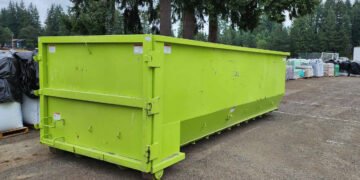So one of your tenants is finally getting ready to move out. This means that it’s time for a move-out inspection.
Move-out inspections can be stressful for both you and your tenants. You both want the unit to be in good condition so you can move new tenants in right away and so your tenant can keep their deposit.
For a stress-free inspection, you need to avoid a few common mistakes. Read on to learn more.
1. Not Communicating
As a landlord, you have a choice between doing a walkthrough with the tenant or doing it without them. There are pros and cons to both of these options, but they both require communication on your part.
If you choose to do the walkthrough with the tenant, make sure that you pick a date and time that works for both of you. Sometimes these times will be inconvenient, but you want to make sure that you’re giving the tenant ample time to get the apartment in good condition.
If you choose to do the walkthrough without the tenant, you still have to communicate. Provide them with a schedule and a move-out inspection checklist when they first tell you that they’re planning on leaving.
After the walkthrough, make sure that you communicate your findings if you plan on keeping some of the security deposit. You don’t want any confusion or miscommunication that could lead to legal trouble.
2. Not Understanding Security Deposits
Speaking of security deposits, it’s imperative that all landlords understand how security deposits work before they start renting out their property. If you’re not sure, at least brush up on your security deposit knowledge before you prepare for a move-out inspection.
A security deposit should go back to the tenant if the rental unit is still in good condition. Many landlords try to retain security deposits because they assume that tenants won’t question them, but this opens you up to legal ramifications.
You need to determine the difference between normal wear-and-tear and actual damage. Remember, it’s normal for there to be some small problems with the apartment (like chipped paint or dirt), but they’re not the tenant’s responsibility.
If there’s serious damage to the property, that’s when you can keep some or all of the security deposit. The security deposit protects both you and the tenant from having to pay to make fixes.
3. Not Documenting the Inspection
Whether you’re doing the inspection alone or letting the tenant come with you, you always have to document the inspection. Use photo and video evidence alongside notes on your move-out inspection form.
If you choose not to document problems on the inspection, not only are you opening yourself up to trouble with the tenant that just moved, but you’re also doing a disservice to your next tenant (and yourself).
Keep documentation so you’re able to keep track. When in doubt, a property management team, like the team at Nomadic Real Estate, can help you.
Avoid These Common Move-Out Inspection Mistakes
Next time you have a tenant who’s moving out, be sure to avoid these move-out inspection rookie mistakes.
Remember: communicate, brush up on security deposit knowledge, and always document your inspection. These things help both you and your tenants alike!
For more helpful articles about the top trending topics, visit the rest of our site.






























































